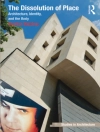Guest-edited by Marcus White and Jane Burry
Cities are facing several coinciding global crises. There is the dominant existential narrative of the impact of and adaptation to climate change, itself powered by cities. In a time of unprecedented urbanisation and growth, resilient architecture and urbanism is needed in response. New modes of transport, renewed anxiety about robots taking jobs, AI, and the humbling recent experience of a global pandemic are all challenging norms and expectations. All of these are forces of social division, all are changing life experience, evoking strong-arm politics, and giving a sense of teetering between radically different possible futures. This is a story about reclaiming the urban design narrative and being alert to the potential impacts of socio-technical decision-making and design in cities. It is a story for its time. The issue explores the dichotomy of idealised visions for the design of urban settlements and the potentially shocking realities that may emerge from the same impulses and intentions. It examines the slippery territory between utopias and some of the ensuing dystopias that may unfold.
Contributors:
Tridib Banerjee, Daniele Belleri and Carlo Ratti, Steve Glackin, Justyna Karakiewicz, Nano Langenheim and Kongjian Yu, Mehrnoush Latifi, Andong Lu, Dan Nyandega, Jordi Oliveras, Kas Oosterhuis, Claudia Pasquero and Marco Poletto, Ian Woodcock, and Tianyi Yang.
Featured architects:
Carlo Ratti Associati, eco Logic Studio, Harrison and White, Turenscape, and Anton Markus Pasing, Remote Control Studio.
Table des matières
A Truly Golden Handbook of Urban DYStopias
Chapter 2 Urban Farming: The Reluctant Utopia
Chapter 3 Pertopia: Speculative Thinking in a Short-Term World
Chapter 4 Broadband-acre City: ‘No Traffic Problem, No Buffering’
Chapter 5 The Mega-Eco-Garden City: Stories of Rewilding and Ecodystopia
Chapter 6 An Urban Odyssey: City Beautiful to City Instagrammable
Chapter 7 Arcological City: Going Underground
Chapter 8 Cool Urbanism: The Radiant Exitance City
Chapter 9 The City of Frictionless Mobility
Chapter 10 High-Definition City: An Invisible Horizon of Technological Human Space
Chapter 11 The Promises of Postcolonial Utopias: Perspectives from the Global South
Chapter 12 Cité Industrielle 4.0: Zoning for the Latest Revolution
Chapter 13 Another Normal: A Techno-Social Alternative to Techno-Feudal Cities
Chapter 14 The Floating ‘Urban Village’: Makoko Futures
Chapter 15 GAN-Physarum: Shaping the Future of the Urbansphere
Chapter 16 From Another Perspective – Fanning the Flames of the City Heat: Anton Markus Pasing
Contributors
About Architectural Design
A propos de l’auteur
Professor Jane Burry is the Dean of the School of Design in the Faculty of Health Arts and Design at Swinburne University of Technology, formerly Professor and Director of the Spatial Information Architecture Laboratory (SIAL) at RMIT University. Professor Burry is lead author of The New Mathematics of Architecture, T&H, 2010, editor of Designing the Dynamic, Melbourne Books, 2013 and coauthor of Prototyping for Architects, T&H 2016 and has over a hundred other publications. In 2020, she co-chaired and coedited Fabricate 2020, Making Resilient Architecture. She has practiced, taught, supervised and researched internationally, including many architectural projects and involvement as a project architect in the technical office at Antoni Gaudí’s Sagrada Família church in Barcelona.
Professor Marcus White is an award-winning architect and urban designer, Professor of Urban Design at Swinburne University of Technology, the director of the Spatio-Temporal Research Urban Design and Architecture Laboratory in the Centre for Design Innovation, and is a director of Harrison and White. His research focuses on designing for liveability using data and emerging technologies. Professor White is the creator of pedestrian network analysis tool www.pedestriancatch.com web platform. He recently led the City of Melbourne 3D Sunlight Study of Public Open Space study with interactive solar map, www.citiesofligh.xyz).












